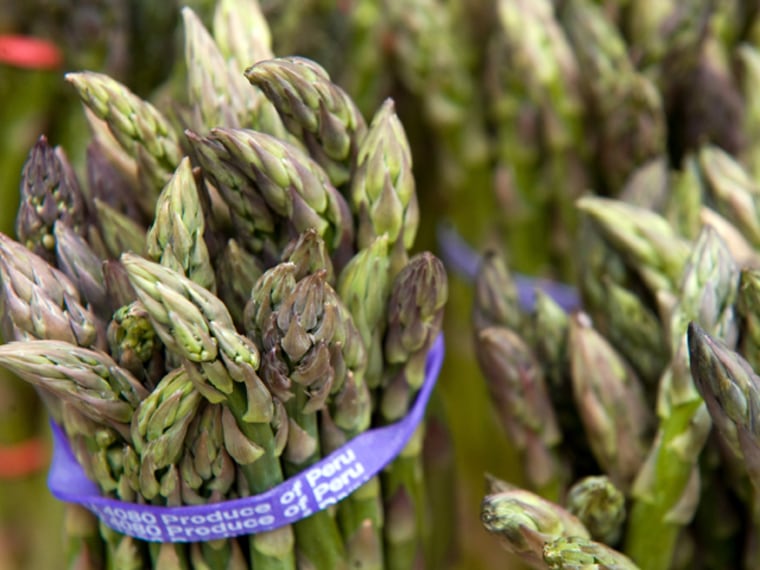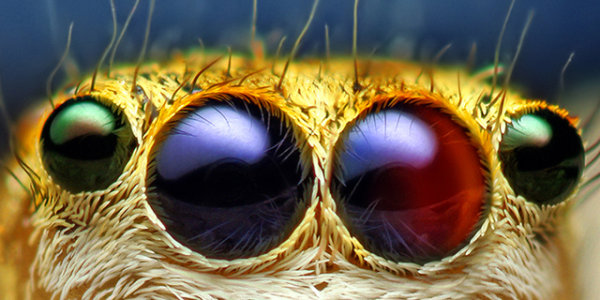If a raw asparagus spear has an added bit of crunch, it could be due to the common asparagus beetle, which affixes its near-invisible eggs onto the vegetable using one of the world's strongest natural glues.
A new study has found that it takes a pull-off force "8,650 times higher than the egg weight" to remove the glued-on white, oval eggs from asparagus.
Since other insects specialize in producing their own egg glue for particular vegetables, the research could lead to better pest control and might inspire more natural bonding products.
The study, published in the latest Proceedings of the Royal Society B, also helps to explain why vegetables have such unique textures, ranging from waxy to slimy.
"Plants have a great diversity of surfaces," explained study authors Dagmar Voigt and Stanislav Gorb, who added that many fruits and vegetables, like asparagus, are covered with "waxes serving different functions, such as, for example, self-cleaning owing to water repellence."
The wax, very noticeable on apples and eggplant, also functions as an insect shield.
But the researchers discovered that the asparagus beetle — a black and reddish brown insect with white markings — has evolved a means of penetrating the protective wax coating on asparagus.
Voigt, a Max Planck Institute for Metals Research scientist, and Gorb, from the Christian Albrechts University of Kiel, Germany, picked asparagus spears in the field of the Botanical Garden of the University of Hohenheim in Stuttgart, Germany. Light and electron magnification revealed that the asparagus beetle glue forms "a kind of a composite material at the interface between the egg and plant cuticle after solidifying, incorporating wax crystals into the adhesive matrix."
Slideshow 19 photos
Incredible insect photos
When the eggs and glue are removed, some of the asparagus wax crystals and other plant material are also pulled off, suggesting that the glue doesn't just stick to the surface of the vegetable, but actually forms a penetrating bond.
The scientists attribute this to proteins in the insect-made glue. They studied chicken eggs and found similar proteins and adhesive ability in the egg whites.
An almost magical color transformation additionally occurs as the asparagus beetle glue sets. When first released, it is yellow. The glue then turns brownish green before "finally appearing shiny black with a greenish shimmer," the researchers describe. The color may help to camouflage the eggs from predators.
Since few consumers wish to bite into a mouthful of insect eggs and bug glue, Voigt and Gorb hope their research might lead to ovicides that "could be modified in such a way that they could dissolve adhesives and detach eggs from plant surfaces."
They suggest a second solution is to try to breed plants with surfaces that can prevent egg attachment.
University of California at Riverside researchers are already working on a new variety of asparagus, called DePaoli, which project leader Mikeal Roose said offers high yield and boasts an excellent spear quality.
While insects are producing their natural super glue, Roose and his team are producing what they call "supermale" asparagus, which are "plants that produce only male offspring when hybridized with a female."
"Male plants produce more spears than female plants because the latter expend energy in order to produce seeds, resulting in lower yields," Roose explained. "For male varieties to be successful, we must identify a supermale that produces hybrids with good quality spears."
Commercial growers may contemplate supermales and insect super glue, but organic home gardeners needn't be too concerned about the tenacious beetle. As the University of Minnesota Pest Management program points out, the insect's tiny eggs hatch in about a week, whereupon the larvae drop to the ground and bury themselves in soil "causing relatively minor damage to the spears."

